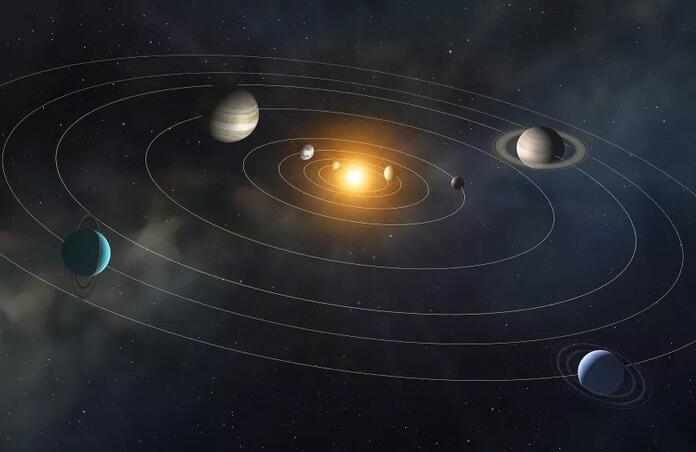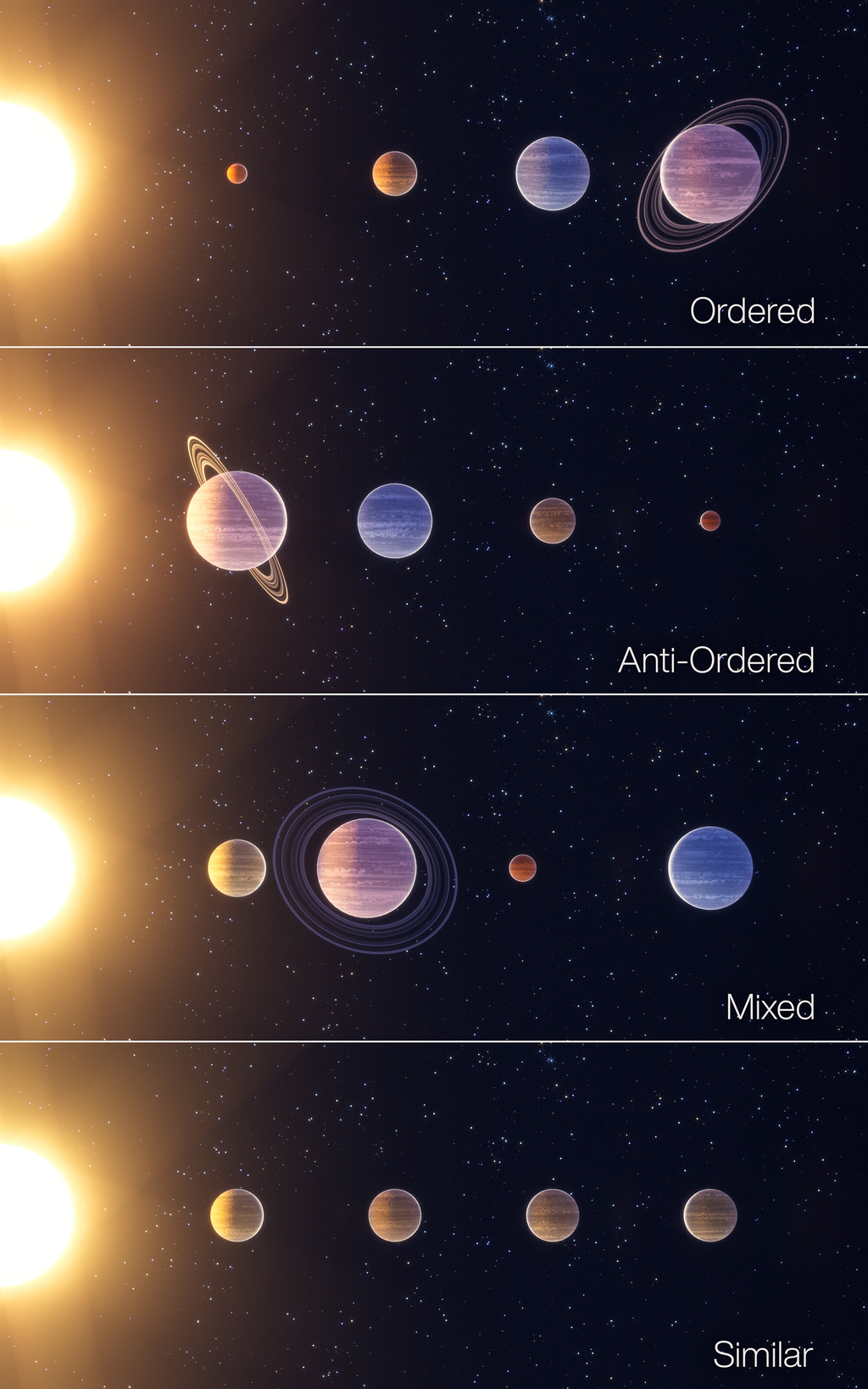Researchers classify four architecture types of planetary systems

Have you ever noticed that our solar system seems to be ordered ‘just right’? Smaller, rocky planets such as our own along with Venus and Mars orbit more closely to the sun, whereas large gas and ice giants such as Jupiter, Saturn and Neptune take further out orbits. Although this seems like the most obvious template for a planetary system, two studies carried out by Swiss researchers have demonstrated that actually, our planetary system is quite unique.
The studies were completed by a team of astronomers from the University of Bern and Geneva, along with the National Centre of Competence in Research (NCCR) PlanetS. Of the 850 multi-planetary systems which have been discovered, a sample was looked at to find common trends, which could help us understand the underlying rules that shape their structures.
It has previously been found from Kepler observations that planets in other systems show very little range in terms of size and mass between planetary neighbours, “like peas in a pod”, explains Lokesh Misha, who is the lead author of the study. However, it wasn’t known if these findings were due to limitations of observational methods, causing a problem to arise. "It was not possible to determine whether the planets in any individual system were similar enough to fall into the class of the 'peas in a pod' systems, or whether they were rather different—just like in our solar system," says Mishra.

Therefore, the team set out to solve this problem by developing a model-independent framework to organise systems depending on the distribution of their planetary masses using two parameters. The first is the coefficient of similarity, CS, which assesses the change in mass between neighbouring planets, and the second is the coefficient of variation, CV, which is the ratio of the standard variation of planetary mass to their mean. From this, it was uncovered that there are four architecture types: ‘similar’, ‘ordered’, ‘anti-ordered’ and ‘mixed’.
‘Similar’-type systems are comprised of neighbouring planets that are alike in mass, an example being Trappist-1. On the other hand, ‘ordered’ systems are akin to our solar system, where the mass of planets increases with the distance from the star. ‘Anti-ordered’ display the opposite trend, with planetary mass decreasing with distance. Lastly, ‘mixed’ systems show a variation of mass from planet to planet.
"This framework can also be applied to any other measurements, such as radius, density or water fractions," says study co-author Yann Alibert, Professor of Planetary Science at the University of Bern and the NCCR PlanetS. "Now, for the first time, we have a tool to study planetary systems as a whole and compare them with other systems."
However, this raises a number of questions: what architecture type is most common? What factors determine the type? Despite the initial belief that ordered types like our solar system would be fairly abundant, it was found that this type is the rarest. "Our results show that 'similar' planetary systems are the most common type of architecture. About eight out of ten planetary systems around stars visible in the night sky have a 'similar' architecture," says Mishra. "This also explains why evidence of this architecture was found in the first few months of the Kepler mission."
To answer the second question, the second paper in the study saw to use a planetary formation model to identify common formation pathways for each architecture type. Some patterns were seen, and to the first order, it was uncovered that the total solid mass of the protoplanetary disk plays a role in deciding what architecture type forms, along with the abundance of heavy elements in the host star. If the protoplanetary disk is less than one Jupiter mass, a ‘similar’ type system will form. For more massive disks, one of the other 3 classes will form with the final type depending on stochastic effects such as dynamical interactions.
Therefore, a ‘similar’ architecture type will arise from small, low-mass disks combined with stars poor in heavy elements. In addition, large, more massive disks with stars that are rich in heavy elements will give rise to ‘ordered’ and ‘anti-ordered’ systems. Lastly, ‘mixed’ systems are born from medium-sized disks.
"A remarkable aspect of these results is that it links the initial conditions of planetary and stellar formation to a measurable property: the system architecture. Billions of years of evolution lie in between them. For the first time, we have succeeded in bridging this huge temporal gap and making testable predictions. It will be exciting to see if they will hold up," explains Alibert.
--
Cover image: MARK GARLICK/SCIENCE PHOTO LIBRARY via Getty Images
Journal sources:
Lokesh Mishra et al, Framework for the architecture of exoplanetary systems. I. Four classes of planetary system architecture, Astronomy & Astrophysics (2023). DOI: 10.1051/0004-6361/202243751
Lokesh Mishra et al, Framework for the architecture of exoplanetary systems. II. Nature versus nurture: Emergent formation pathways of architecture classes, Astronomy & Astrophysics (2023). DOI: 10.1051/0004-6361/202244705
Luca Maltagliati, Finding order in planetary architectures, Nature Astronomy (2023). DOI: 10.1038/s41550-023-01895-0
